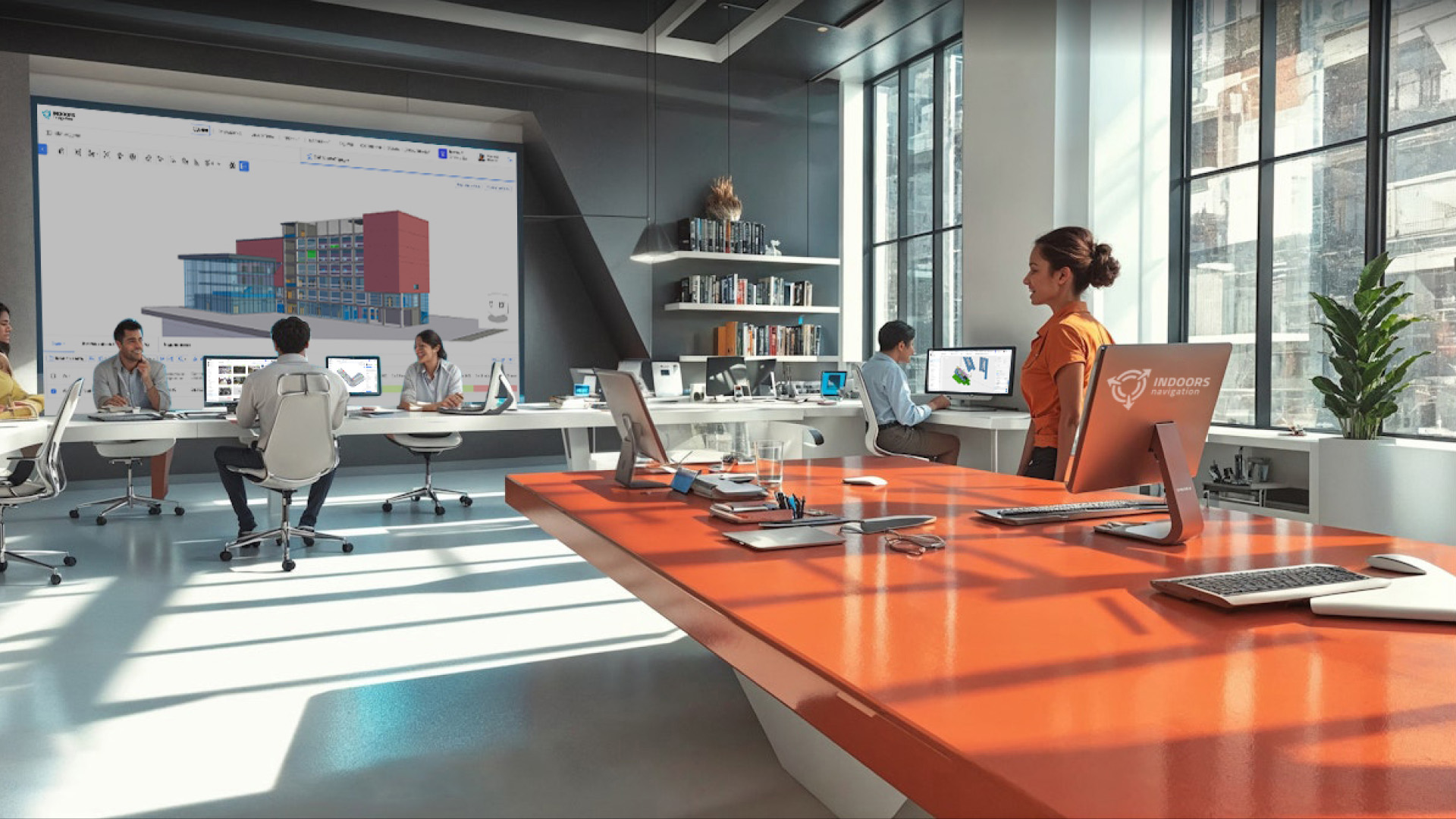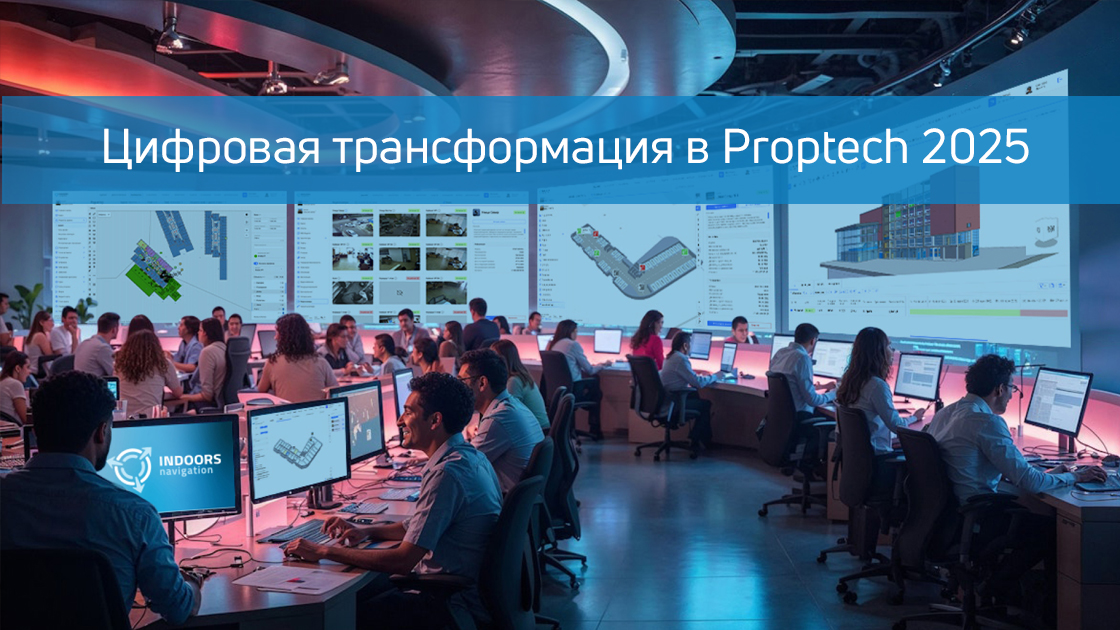Digital transformation continues to change all industries, and Proptech (Property Technology) is no exception. By 2025, real estate technologies will reach a new level: smart buildings, digital twins, automation of facility management and, of course, innovative Indoors Navigation systems will become the standard.
In this article, we will analyze the key trends of digital transformation in Protech, the role of Indoor navigation, and how these technologies benefit businesses and users.
Finally, inefficient use of resources, high maintenance costs, and lack of data for process analysis and optimization complicate the management of residential complexes.
1. Protech in 2025: the main trends of digital transformation.
1.1. Smart buildings and IoT
Modern buildings are turning into "living" ecosystems where sensors, automation systems, and IoT (Internet of Things) control lighting, climate, security, and energy consumption.
Case study: CBRE has implemented an IoT platform in office centers, which has reduced energy consumption by 20%.
1.2. Digital Twins
The Digital Twin is a virtual replica of the building that is updated in real time. The technology allows you to simulate operational scenarios, predict breakdowns and optimize space.
Case study: The Edge in Amsterdam uses a digital twin to manage a building, which has increased space efficiency by 30%.
1.3. Blockchain and Smart contracts
Blockchain technology accelerates real estate transactions, and smart contracts automate rental and payment processes.
Case study: Propy is a platform for buying real estate through the blockchain, which reduces transaction times from weeks to days.
1.4. Indoor Navigation
One of the fastest growing segments of Proptech is Indoor navigation. Technology helps people navigate shopping malls, airports, hospitals, and business centers.
Case study: Mall of America introduced Indoor navigation, which increased the average time spent by visitors by 15% and increased sales.
2. Indoor navigation in 2025: how it works and why it is needed.
2.1. Indoor navigation technologies.
- Bluetooth Low Energy (BLE) and beacons – transmit signals to smartphones.
- Wi-Fi – used for approximate delayed positioning.
- RFID is applied at a close distance from the reader.
- LiDAR and computer vision are used in AR navigation.
- UWB (Ultra-Wideband) – provides accuracy up to 10 cm.
2.2. Where is Indoor Navigation used?
✅ Shopping malls – navigate through stores and promotions.
✅ Airports and train stations – quick search for exits or check-in desks.
✅ Hospitals – routing patients to doctors' offices.
✅ Office centers – search for meeting and work areas.
✅ Warehouses and logistics – optimization of employee movements.
2.3. Business benefits.
🔹 Increased conversion – customers find the right stores faster.
🔹 Reducing the burden on staff – fewer questions "Where is ...?".
🔹 Collection of analytics – movement data helps to optimize the space.
🔹 Improved customer experience – convenience for visitors = loyalty.

3. Cases of Indoor navigation implementation in 2025 in the West.
3.1. Westfield Shopping Center (London)
Implemented AR navigation through the app. Customers see the route and receive personalized offers. **Result:** sales growth of 12%.
3.2. Heathrow Airport (London)
Uses BLE beacons for navigation. Passengers save up to 30% of the time searching for an exit.
3.3. Mount Sinai Hospital (New York)
The navigation system has reduced patient waiting time by 25%.
4. The Future of Proptech and Indoor Navigation
By 2025, it is expected:
- Mass adoption of AR/VR navigation.
- Integration of Indoor navigation with smart cities.
- Development of autonomous robot assistants in buildings.
The digital transformation in Proptech 2025 makes buildings smarter and navigation more convenient. Modern indoor navigation systems are becoming a must-have for businesses, increasing efficiency and improving user experience at a low cost of implementation.
📌 Learn more at www.indoorsnavi.pro about advanced solutions for indoor navigation. Implement technology today to stay one step ahead!
👇 Subscribe and keep up to date with innovations! 👇







10 thoughts on “Цифровая трансформация в Proptech 2025: технологии меняют недвижимость и индор навигацию”
Отличный обзор актуальных технологий и трендов в Proptech! Очень ценно видеть конкретные кейсы и практическую пользу цифровой трансформации для бизнеса и пользователей.
Точность при использовании UWB до 10см — это сильно
еще лет 10 назад я даже представить не мог что технологии так быстро будут развиваться
В 2025 году недвижимость умнеет на глазах, здания сами себя обслуживают, а навигация в ТЦ ведёт тебя как личный ассистент.
Звучит очень мощно, безумно интересно что получится на практике у нас в России!
Спасибо за статью, интересно было узнать о новых технологиях
круто, что Indoors Navigation уже много лет обеспечивает удобную навигацию в помещениях, предоставляя возможность как экономить время пассажирам, так и собирать аналитику в помещениях. Proptech 2025 лишний раз подчёркивает, что использование таких решений актуально и востребовано!
Вау, не думал что система навигации может так сильно понизить время ожидания. Интересно насколько хорошо это сработает у нас с очень старым населением)
Согласен, сейчас для бизнеса индор навигация must-have
Круто, что технологии так меняют недвижку